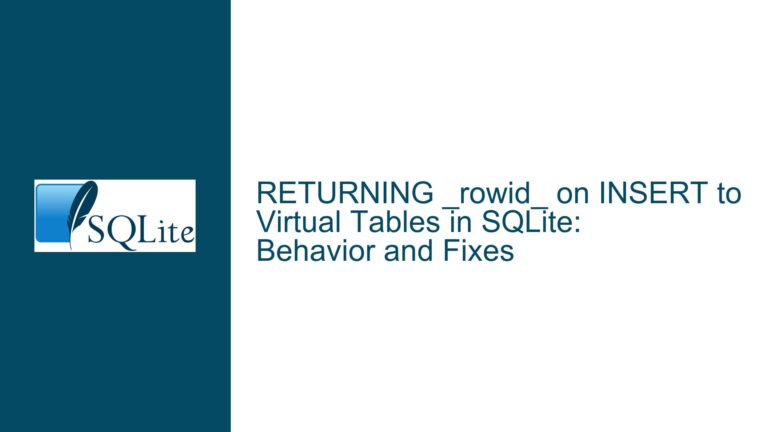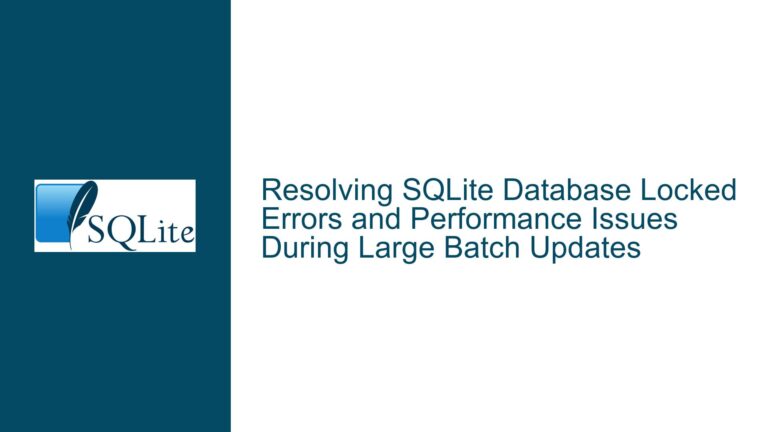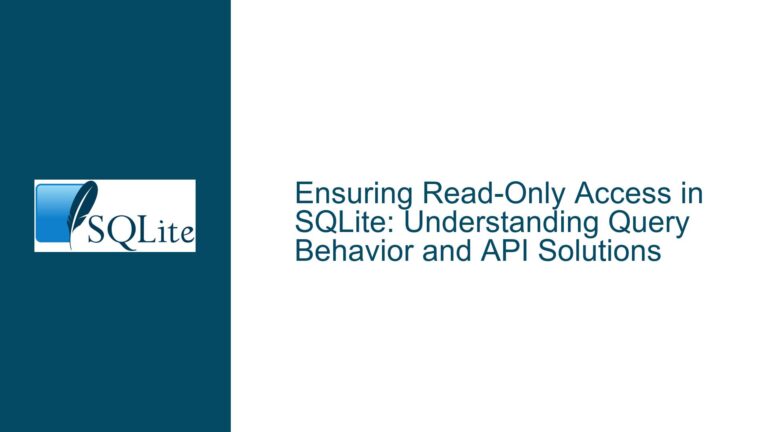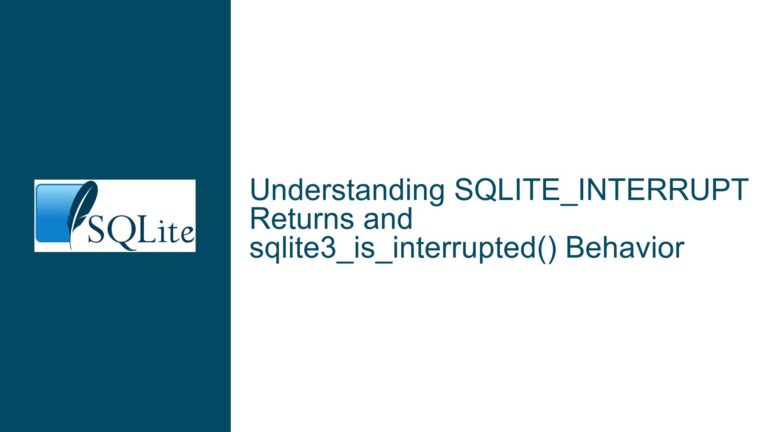RETURNING _rowid_ on INSERT to Virtual Tables in SQLite: Behavior and Fixes
Understanding the Behavior of RETURNING rowid in Virtual Table Inserts When working with SQLite virtual tables, developers often encounter unexpected behavior when using the RETURNING clause with INSERT statements. Specifically, the issue arises when attempting to retrieve the _rowid_ of a newly inserted row into a virtual table. While the RETURNING _rowid_ clause executes without…









